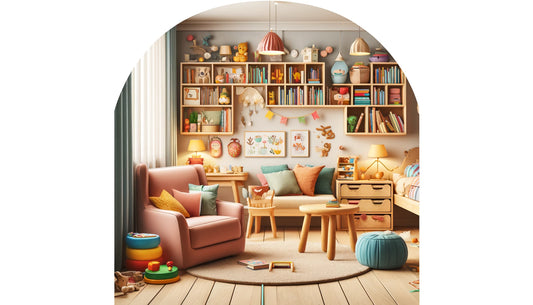Creating an enticing reading corner in your classroom can significantly impact students' engagement with literature and learning. This guide offers a plethora of practical suggestions and insights to transform a mundane corner into a vibrant hub of literary exploration and discovery.
Reading Corner Ideas:
-
Make a dedicated space away from the rest of the classroom:
- Designating a dedicated reading area away from the hustle and bustle of the classroom can provide students with a sense of calm and focus. Consider using room dividers, curtains, or bookshelves to delineate the space.
Example: Transform a quiet corner near a window into a cozy reading alcove by adding sheer curtains, soft rugs, and comfortable seating.
-
Build a makeshift library stand for books:
- Constructing a library stand not only organizes books efficiently but also adds visual appeal to the reading corner. Use sturdy materials such as wooden crates or PVC pipes to build a tiered stand for displaying books attractively.
Example: Stack wooden crates of varying sizes to create a rustic yet functional book stand. Paint the crates in vibrant colors to add a pop of excitement to the reading corner.
-
Decorate the space with colors, shapes, materials:
- Infusing the reading corner with vibrant colors, intriguing shapes, and tactile materials can stimulate students' senses and ignite their imagination. Consider incorporating elements like wall decals, themed rugs, and textured cushions to create an immersive environment.
Example: Hang a canopy adorned with fairy lights above the reading area to evoke a whimsical atmosphere. Add floor cushions in contrasting colors and textures to encourage students to linger and explore.
-
Choose decorating themes for popular books and movies:
- Decorating the reading corner based on popular books or movies can captivate students' interest and make reading more enticing. Select themes that resonate with your students' interests and preferences, such as Harry Potter, superheroes, or fantasy worlds.
Example: Create a Harry Potter-themed reading corner complete with Hogwarts house banners, wizarding artefacts, and cozy armchairs resembling the Gryffindor common room.
-
Make the space comfortable and easy to access:
- Comfort is paramount in a reading corner, as it encourages students to relax and immerse themselves in books. Provide a variety of seating options, such as bean bags, floor cushions, or rocking chairs, to accommodate different preferences.
Example: Arrange bean bag chairs in a circle around a low table to create a communal reading space where students can gather for shared reading activities or discussions.
-
Fill with popular book titles that are fun for gathering around to read:
- Stocking the reading corner with a diverse selection of popular and engaging books is essential to cater to students' varying interests and reading levels. Include a mix of fiction, non-fiction, graphic novels, and picture books to appeal to all readers.
Example: Display a range of books on topics like adventure, mystery, science fiction, and biographies to cater to diverse reading tastes. Rotate the book selection regularly to keep students excited and curious about new titles.
-
Create a schedule for reading times:
- Establishing a regular schedule for reading sessions helps integrate reading into the daily routine and instills a habit of lifelong learning. Set aside dedicated time slots for silent reading, read-aloud sessions, or book discussions to promote literacy skills and foster a love for reading.
Example: Allocate 15-20 minutes at the beginning or end of each school day for silent reading. Encourage students to bring their favorite books from home or select titles from the classroom library to read independently.
FAQ Section:
How can I optimize a small classroom for a reading corner?
Utilize vertical space with wall-mounted shelves or bookcases to maximize floor space. Choose compact furniture like foldable chairs or stools that can be easily stored when not in use.
What are some budget-friendly ways to decorate a classroom reading corner?
Get creative with DIY decorations using inexpensive materials like cardboard, paper, and fabric scraps. Involve students in crafting decorations to foster a sense of ownership and pride in the reading corner.
How can I encourage student engagement in the classroom reading corner?
Organize reading-related activities such as book clubs, author studies, or themed reading challenges to pique students' interest and promote active participation. Offer incentives like bookmarks, stickers, or certificates to reward students for reaching reading milestones.
Are there any safety considerations when designing a preschool reading corner?
Prioritize safety by choosing child-friendly furniture and materials that are sturdy and easy to clean. Avoid small objects or decorations that pose choking hazards, and ensure furniture is anchored securely to prevent tipping.
What role does a reading corner play in promoting literacy skills among middle school students?
A reading corner provides a conducive environment for middle school students to develop critical literacy skills such as comprehension, fluency, and vocabulary expansion. By offering a wide selection of books and fostering a culture of reading, educators can empower students to become confident and proficient readers.
Incorporating these ideas and insights into your classroom reading corner can transform it into a dynamic and enriching space that inspires a lifelong love for reading and learning.




